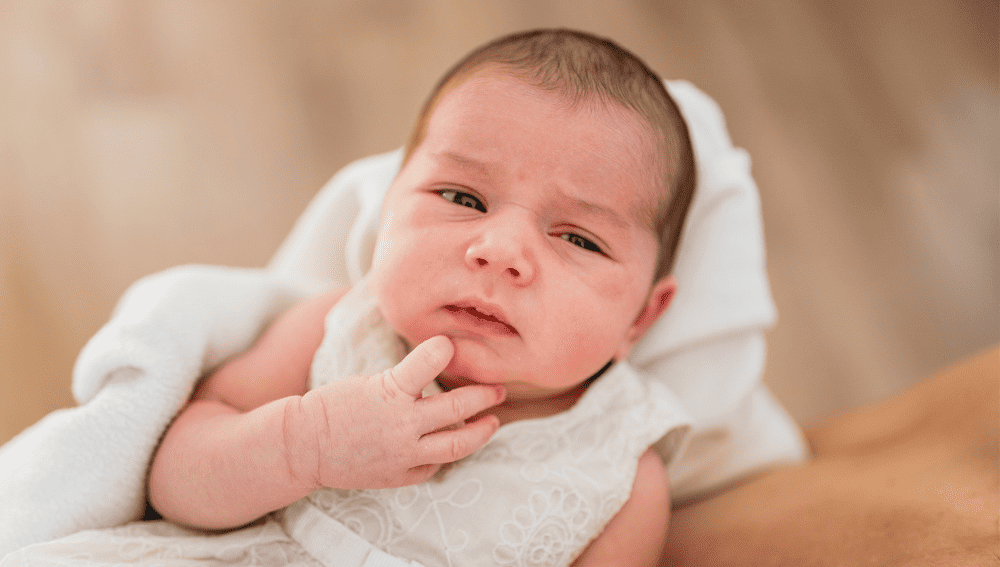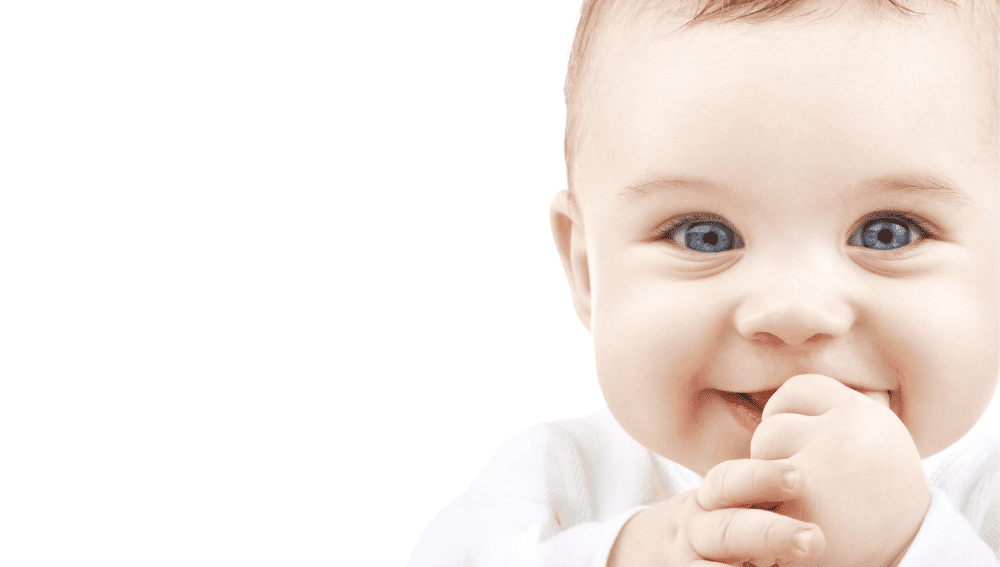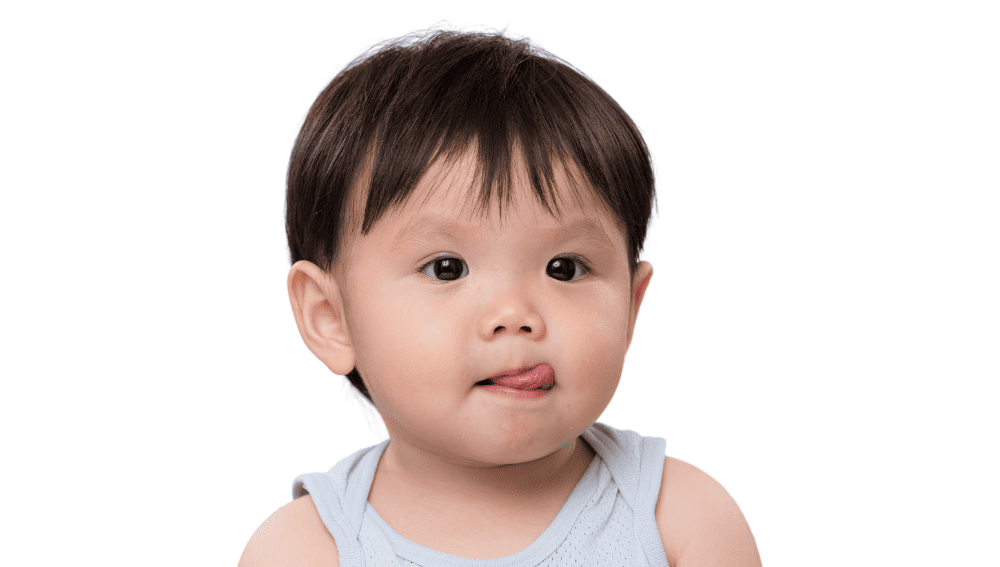Babies are born with many unique features, but have you ever wondered if they are born with eyebrows? The answer is yes! Babies are born with eyebrows, but they may not be fully formed or visible at birth.
The Basics of Baby Eyebrows Eyebrows are an important part of our facial features, and they serve various functions such as protecting our eyes from sweat and debris.
In babies, eyebrows are usually thin and light-colored, and they may not be fully developed at birth. However, as babies grow and develop, their eyebrows will become thicker and more defined.
Hair Growth in Babies Hair growth in babies is a complex process that is influenced by various factors such as genetics, nutrition, and overall health. While some babies are born with a full head of hair, others may have little to no hair at birth.
Similarly, some babies may have thick and well-defined eyebrows, while others may have thin and barely visible eyebrows.
Key Takeaways
- Babies are born with eyebrows, but they may not be fully formed or visible at birth.
- Eyebrows in babies are usually thin and light-colored, and they become thicker and more defined as babies grow and develop.
- Hair growth in babies is influenced by various factors such as genetics, nutrition, and overall health.
The Basics of Baby Eyebrows
Babies are born with eyebrows, but they may not be visible or defined at birth. Eyebrow hair starts to grow during fetal development and continues to grow after birth. The color of the eyebrow hair may be different from the hair on the baby’s head.
Newborn babies may have very light and fine eyebrows that are not yet defined. As the baby grows, the eyebrows become more visible and defined. The thickness and shape of the eyebrows may vary from baby to baby.
It is important to note that some babies may have sparse or patchy eyebrows, which is normal and usually resolves on its own. However, if the baby’s eyebrows are extremely thin or absent, it may be a sign of a medical condition and should be evaluated by a doctor.
In terms of eyebrow color, babies with light hair may have light-colored eyebrows, while babies with dark hair may have darker eyebrows. However, the color of the eyebrows may not always match the hair on the baby’s head.
In summary, babies are born with eyebrows, but they may not be visible or defined at birth. The thickness, shape, and color of the eyebrows may vary from baby to baby and may change over time. If there are concerns about the baby’s eyebrows, it is important to consult a doctor.
Hair Growth in Babies
In Utero Development
Hair growth in babies begins in the womb. The first hair to develop is called lanugo, which is a fine, downy hair that covers the baby’s body. Lanugo hair is thought to help regulate the baby’s body temperature in utero.
Around 20 weeks gestation, the baby’s hair follicles start to develop and produce vellus hair, which is a very fine, soft hair that covers the entire body.
Post-Birth Changes
After birth, the baby’s hair undergoes some changes. The lanugo hair starts to fall out, and the vellus hair begins to be replaced by terminal hair, which is thicker and coarser. The terminal hair grows from hair follicles, which are tiny pockets in the skin that produce hair.
Babies are born with hair all over their bodies, including their eyebrows. The eyebrows are made up of terminal hair, which is thicker and coarser than the vellus hair that covers the rest of the body.
The color and thickness of a baby’s hair can vary greatly, and it may change over time.
It is normal for babies to lose some of their hair in the first few months of life. This is due to a natural shedding process and is nothing to worry about. It is also normal for babies to have fine hair on their heads that may take several months to grow in fully.
In conclusion, babies are born with eyebrows, which are made up of terminal hair. Hair growth in babies begins in the womb with the development of lanugo and vellus hair, which is later replaced by terminal hair after birth.
The color and thickness of a baby’s hair can vary, and it may change over time.
Genetic Influence on Baby Eyebrows
Babies are born with eyebrows, but the appearance and thickness of the eyebrows can vary depending on genetic factors. Genetics plays a significant role in determining the thickness, appearance, and texture of the eyebrows.
Genes are responsible for the development of hair follicles, which determine the thickness and appearance of the eyebrows. The thickness and appearance of eyebrows are determined by a combination of genetic factors.
For example, genes that are responsible for hair growth can also affect the thickness and appearance of eyebrows.
Ethnicity can also play a role in determining the appearance of eyebrows. People of different ethnicities have different eyebrow shapes and thickness.
For example, people of Asian descent tend to have straighter and thinner eyebrows, while people of African descent tend to have thicker and more arched eyebrows.
The texture of eyebrows is also determined by genetics. Some people have coarse and thick eyebrows, while others have fine and thin eyebrows.
The texture of eyebrows can also be influenced by environmental factors, such as exposure to sunlight and chemicals.
In summary, genetics plays a significant role in determining the appearance, thickness, and texture of baby eyebrows. Ethnicity and environmental factors can also influence the appearance of eyebrows.
Nutritional Impact on Eyebrow Development
Nutrition plays a crucial role in the overall development of a baby, including the development of eyebrows. Adequate nutrition is essential for the growth and development of hair follicles, which are responsible for the growth of eyebrows.
Iron is one of the most important nutrients required for hair growth, including eyebrow hair. Iron deficiency can lead to hair loss and thinning, which can affect eyebrow growth.
Therefore, it is crucial to ensure that babies receive adequate iron from their diet or formula.
Vitamin E is another nutrient that plays a vital role in hair growth and development. It helps to improve blood circulation to the scalp, which can promote hair growth.
Breast milk and formula are good sources of vitamin E, which can help to support eyebrow growth in babies.
Breast milk is the best source of nutrition for babies, as it provides all the necessary nutrients required for growth and development. It contains a wide range of nutrients, including vitamins, minerals, and proteins, which can help to support eyebrow growth.
Formula milk is also a good source of nutrition for babies, but it may not contain all the necessary nutrients required for optimal growth and development.
Therefore, it is essential to choose a formula that is rich in nutrients, including iron and vitamin E, to support eyebrow growth.
In conclusion, adequate nutrition is essential for the development of eyebrows in babies. Iron and vitamin E are two of the most important nutrients required for hair growth, including eyebrow hair.
Breast milk and formula are good sources of these nutrients, which can help to support eyebrow growth in babies.
Skin and Hair Conditions in Babies
Common Conditions
Babies are prone to various skin and hair conditions, some of which are harmless and resolve on their own, while others require medical attention. It is not uncommon for babies to have skin and hair conditions that can cause concern for parents, but most of these conditions are not serious.
One common condition that babies experience is seborrheic dermatitis, which is also known as cradle cap. This condition causes redness and irritation on the scalp and can sometimes extend to the face and neck.
Another common condition is eczema, which causes red, itchy patches on the skin. Psoriasis is also a skin condition that can affect babies, causing thick, scaly patches on the skin.
Another hair condition that babies may experience is alopecia, which is the loss of hair in patches. In some cases, babies may be born without eyebrows or have sparse eyebrows, which can be a cosmetic concern for some parents.
Treatment Options
Treatment options for skin and hair conditions in babies depend on the specific condition and severity. For mild cases of cradle cap, gentle shampooing and brushing can help remove the scales. For more severe cases, medicated shampoos or creams may be necessary.
Eczema can be managed with moisturizers and avoiding triggers such as harsh soaps and fabrics. In some cases, prescription creams or ointments may be necessary.
For alopecia, treatment options depend on the cause of hair loss. Some cases may resolve on their own, while others may require medication or other interventions.
It is important for parents to seek medical attention if they notice any concerning skin or hair conditions in their baby. A healthcare provider can provide a proper diagnosis and recommend appropriate treatment options.
Natural Remedies for Eyebrow Growth
There are several natural remedies that can help promote eyebrow growth. These remedies are safe and effective, and can be easily incorporated into your daily routine.
Coconut Oil
Coconut oil is a natural moisturizer that can help nourish hair follicles and promote eyebrow growth. Simply apply a small amount of coconut oil to your eyebrows before bed, and leave it on overnight. Rinse it off in the morning with warm water.
Aloe Vera
Aloe vera is known for its healing properties, and it can also help promote eyebrow growth. Apply fresh aloe vera gel to your eyebrows, and leave it on for 30 minutes before rinsing it off with warm water. Repeat this process daily for best results.
Castor Oil
Castor oil is rich in fatty acids that can help nourish hair follicles and promote eyebrow growth. Apply a small amount of castor oil to your eyebrows before bed, and leave it on overnight. Rinse it off in the morning with warm water.
Olive Oil
Olive oil is a natural moisturizer that can help promote eyebrow growth. Apply a small amount of olive oil to your eyebrows before bed, and leave it on overnight. Rinse it off in the morning with warm water.
Home Remedies
There are several other home remedies that can help promote eyebrow growth, including:
- Onion juice: Apply fresh onion juice to your eyebrows, and leave it on for 30 minutes before rinsing it off with warm water.
- Egg yolk: Mix one egg yolk with a tablespoon of olive oil, and apply it to your eyebrows. Leave it on for 15-20 minutes before rinsing it off with warm water.
- Milk: Dip a cotton swab in milk, and apply it to your eyebrows. Leave it on for 15-20 minutes before rinsing it off with warm water.
In conclusion, there are several natural remedies that can help promote eyebrow growth. These remedies are safe, effective, and easy to incorporate into your daily routine.
The Role of Eyebrows in Babies
Eyebrows are an important feature of the face, and they play a crucial role in facial expressions and communication. Babies are born with eyebrows, and they serve several functions in their development.
Eyebrows and Eye Protection
Eyebrows help to protect the eyes from sweat, rain, and other debris that may fall from above. They also help to prevent sweat from running into the eyes, which can cause irritation and discomfort.
Eyebrows and Facial Expressions
Eyebrows are an essential part of facial expressions, and they play a critical role in nonverbal communication. Babies use their eyebrows to convey emotions such as surprise, anger, and happiness. Eyebrows can also help to convey subtle nuances of expression, such as skepticism or concern.
Eyebrows and Eye Contact
Eyebrows are also important in establishing eye contact. When a baby looks at someone, their eyebrows help to frame their eyes and draw attention to them. This can help to establish a connection with the person they are looking at and facilitate communication.
Eyebrows and Pigmentation
Eyebrows can vary in color and thickness, depending on a baby’s genetics and ethnicity. Some babies are born with light-colored eyebrows that darken over time, while others have dark eyebrows from birth.
The pigmentation of the eyebrows can also be influenced by environmental factors such as sun exposure.
Conclusion
In conclusion, eyebrows play a crucial role in the development of babies, both in terms of eye protection and nonverbal communication. They are an essential part of facial expressions and can help to establish eye contact and facilitate communication.
Consulting a Healthcare Provider
If parents have concerns or questions about their newborn’s eyebrows, it is important to consult a healthcare provider. A pediatrician or healthcare provider can provide accurate information and guidance on any concerns related to the baby’s physical appearance.
First-time parents may experience stress or anxiety about their baby’s development, and it is normal to have questions about their appearance. Healthcare providers are there to provide reassurance and answer any questions parents may have.
In some cases, medications or medical conditions may affect a baby’s eyebrows. If parents notice any changes or abnormalities in their baby’s eyebrows, they should consult their healthcare provider. It is important to provide accurate and detailed information about any medications or medical conditions that the baby may have.
Overall, consulting a healthcare provider is the best course of action for parents who have concerns about their baby’s eyebrows. Healthcare providers can provide accurate information, guidance, and reassurance to parents.
Special Circumstances
Premature Babies
Premature babies are babies born before the 37th week of pregnancy. They may have less hair, including eyebrows, than full-term babies. Premature babies also have thinner skin, which makes it easier for their eyebrows to fall out. However, their eyebrows will grow back as they get older.
Environment Influences
The environment can also influence the growth of eyebrows in babies. For example, if a baby is exposed to high levels of stress, their eyebrows may fall out. This is because stress can cause hair to fall out, including the hair on the eyebrows.
Similarly, if a baby sweats excessively, their eyebrows may fall out. This is because sweat can cause hair to fall out, including the hair on the eyebrows. However, this is usually not a cause for concern as the hair will grow back once the baby stops sweating excessively.
In conclusion, while some babies may be born with less hair, including eyebrows, than others, this is usually not a cause for concern. Premature babies and environmental factors can also influence the growth of eyebrows in babies, but the hair will usually grow back as the baby gets older.
Frequently Asked Questions
Do babies have eyebrows when they are born?
Yes, babies are born with eyebrows. However, they may not be as noticeable or fully developed as those of adults.
When do babies’ eyebrows start to grow?
Babies’ eyebrows start to grow during the prenatal period, but they may not be fully developed until a few months after birth.
Why are some babies born with light eyebrows?
The color of a baby’s eyebrows is determined by genetics. Some babies may be born with light eyebrows due to the genes inherited from their parents.
Can you darken a baby’s eyebrows?
It is not recommended to darken a baby’s eyebrows as it may cause harm to their delicate skin. It is best to let their eyebrows grow naturally.
Do premature babies have eyebrows?
Yes, premature babies have eyebrows, but they may be less developed than those of full-term babies.
Do newborns have eyelashes and eyebrows?
Yes, newborns have both eyelashes and eyebrows. However, they may not be as noticeable as those of adults.
Learn more in a related post: When Do Babies Get Eyelashes?

Iesha is a loving mother of 2 beautiful children. She’s an active parent who enjoys indoor and outdoor adventures with her family. Her mission is to share practical and realistic parenting advice to help the parenting community becoming stronger.



